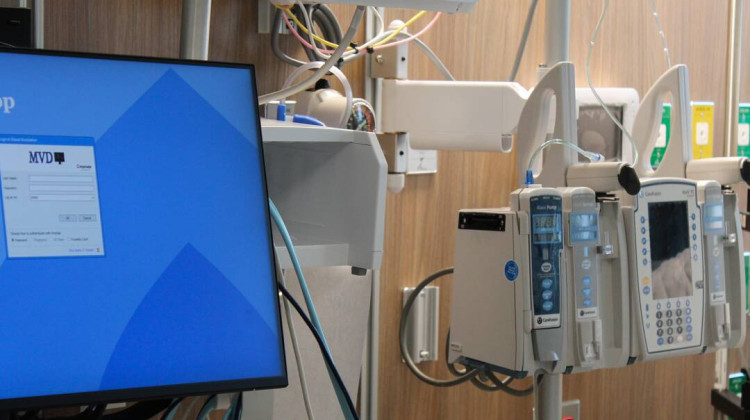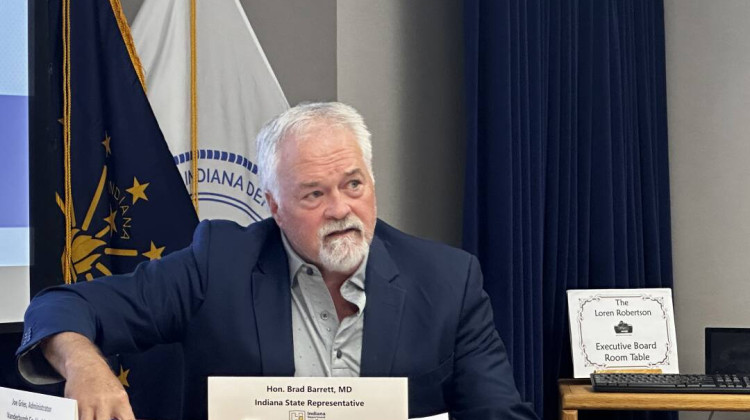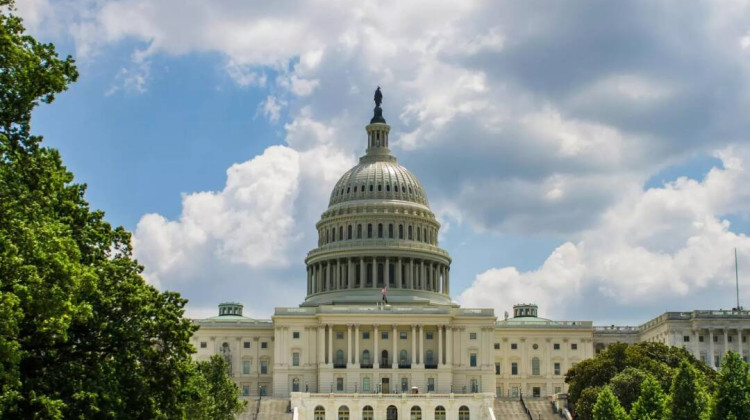
The RAND 4.0 study, conducted by the nonprofit public policy research organization, shows Hoosiers paid hospitals nearly 300 percent more than what Medicare would pay for the same services.
Abby Anaday/UnsplashIndiana ranks seventh highest in the nation for hospital costs, according to a recently released study from the RAND Corporation. The RAND 4.0 study, conducted by the nonprofit public policy research organization, shows Hoosiers paid hospitals nearly 300 percent more than what Medicare would pay for the same services.
The report examines medical claims from employers and state databases. Indiana’s relative prices are the highest in comparison to its four border states of Illinois, Kentucky, Ohio and Michigan. While Indiana’s hospital costs are seventh highest in the nation, physician prices are ranked fourth lowest — at 126 percent of Medicare.
Now, experts and hospital advocacy groups are arguing if the report paints an accurate picture of current prices and what the state’s hospitals are doing to lower them.
The RAND Corporation released the full report last week, but preliminary results were shared earlier this month at the Employers’ Forum of Indiana’s National Hospital Price Transparency Conference.
The Employers' Forum of Indiana partnered with RAND on the study. Employers' Forum President Gloria Sachdev said Hoosier patients deserve lower prices.
“All of us want to go to the best quality at the best price,” Sachdev said.
Sachdev said price transparency is an important factor in lowering health care costs. At the conference, the organization released an interactive dashboard called Sage Transparency that provides data on hospital prices across the country.
”We can shop for a car and look up the quality and price scores for a car, or for a stapler, or really for anything we're shopping for,” Sachdev said. “And now, for the first time, we have a way to shop online for health care services looking at both price and quality for different hospitals for different types of services.”
But the Indiana Hospital Association is concerned that because some of the data in the report is from 2018, it doesn’t accurately portray the current hospital price landscape.
“Fast forward [to] today, you would probably see a much different picture than some tried to paint about Indiana,” said Brian Tabor, president of the hospital advocacy group.
Tabor pointed to Indiana University Health, the state’s largest hospital system, which announced in December it would freeze hospital prices through 2025 to align with national averages.
After the National Hospital Price Transparency conference, Tabor expressed concern that the organizations behind the conference are connected through national funding and hope for a move toward government price setting.
“Instead of the price transparency and free market solutions that are working in Indiana, I fear these groups are coordinating to use outdated reports to push heavy-handed policies and state public options,” Tabor said in an email.
Sachdev with the Employers' Forum of Indiana called Tabor’s statement "nonsense."
“We are working towards providing more transparency in the space of health care and bringing prices down,” Sachdev said. “There's no web of anything that's happening. You know, employers are paying for health care, people are paying for health care, and they deserve better.”
Tabor also said the RAND study identifies, but does not take into account, the low physician payments. He said hospitals have to subsidize poor payments to physicians from big insurance companies.
“If you were to see more recent data on pricing, if you were to look at the full picture of how Indiana hospitals are paid by Medicare, but also paid by commercial insurers, and how they're the physicians that work for Indiana hospitals, how they're paid by those insurers, you would see that Indiana is probably really more towards the middle of the pack when it comes to health care costs,” Tabor said. “But when you look at a fairly narrow data set, you can make some pretty quick assumptions.”
And Tabor said the study’s use of Medicare as a benchmark for hospital pricing is also a concern.
“To try to benchmark hospital spending, physician spending, your pharmaceutical spending against a government program that changes with the stroke of a pen may provide some level of a benchmark at at the 30,000-foot level,” Tabor said. “But the more you try to drill down to regions or states or specific hospitals, there's so much variation.”
Michael Hicks is director of the Center for Business and Economic Research at Ball State University. He says Medicare is used as a benchmark because Medicare costs are based on the actual cost of the service.
“The Medicare benchmark allows us to compare these current costs appropriately across different states,” Hicks said.
Hicks said Indiana’s high hospital costs affect all Hoosiers because they are paying some of the highest costs in the country.
“And if you're a business, which pays about half the health care spending in Indiana through employer-based health insurance, it means that your costs of doing business in Indiana are substantially higher than they would be if you drove across the Ohio River into Kentucky that has a far more reasonable health care environment,” Hicks said.
Hicks said Indiana’s hospital costs should not be as high as they are.
“We're a state that ought to have below-average health care costs given, you know, cost of living and the likes,” Hicks said. “The fact that we're seven tightest with some cities, particularly Fort Wayne, right at the very top, implies a really deep and abiding problem here.”
Hicks said price transparency is just part of the solution in lowering Indiana’s high hospital costs. He pointed to the large-market shares Indiana hospitals have as one reason for the high costs.
“The monopolization of hospitals or the fewness of hospitals, particularly outside of Indianapolis, allows them to have captured the market and allows them to charge higher prices without facing competition that generally keeps prices lower,” Hicks said.
He said the market share needs to be broken up to lower prices.
“I really don't think that that mild legislative action is going to work,” Hicks said. “It's going to have to be something very significant involving the courts and legislature.”
Last year, the state’s top legislators wrote letters calling for hospitals and insurers to lower the “out-of-control costs” of health care. And in 2020, lawmakers passed a bill that would create a claims database to show hospital price transparency.
Contact reporter Darian Benson at dbenson@wfyi.org. Follow on Twitter: @helloimdarian.
 DONATE
DONATE








 Support WFYI. We can't do it without you.
Support WFYI. We can't do it without you.